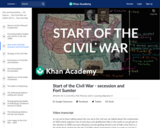
From Lincoln's election to the formation of the Confederacy and Fort Sumter.
- Subject:
- History
- U.S. History
- Material Type:
- Lesson
- Provider:
- Khan Academy
- Provider Set:
- Khan Academy
- Author:
- Kim Kutz
- Sal Khan
- Date Added:
- 07/15/2021

From Lincoln's election to the formation of the Confederacy and Fort Sumter.

A collection of resources related to the State of the Union.

Atop the Dome of the U.S. Capitol stands a statue more than 19 feet tall, cast in bronze. Her name is Freedom. American artist Thomas Crawford sculpted Freedom from plaster at his studio in Rome, Italy. Crawford created three designs. The statue was shipped across the ocean in five pieces and assembled by an Italian craftsman for temporary display on the Capitol grounds. Then the pieces were to be taken apart and cast into bronze.The U.S. government hired Clark Mills, who owned a foundry in Washington, D.C., to make the bronze castings. A foundry is a factory where metal is melted for casting. However, the artist who assembled Freedom covered the seams between the five pieces in plaster, hiding them from view. He refused to take his work apart unless he received a pay raise. Only one man knew what to do. His name was Philip Reid.
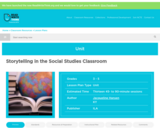
People make the past come alive as students research and then share stories about famous Americans who promoted democratic ideals.

This video segment explores how the song Strange Fruit became one of the best-known and most enduring songs of protest. In 1939, the legendary blues singer Billie Holiday performed the song as a daring criticism of the commonplace practice of the lynching of African-Americans. Civil rights groups such as the NAACP had made countless appeals, but it was Holiday’s haunting rendition that made it impossible for white Americans and lawmakers to ignore the widespread crime.
A second video segment includes the story of Abel Meeropol, son of Russian Jewish immigrants and a high school English teacher in the Bronx neighborhood where he was born, wrote a poem entitled Strange Fruit. This video discusses how the poem would later be performed by the legendary Billie Holiday as a song of protest, bringing national attention to the crime of lynching.
https://opb.pbslearningmedia.org/resource/bf09.socst.us.prosp.songborn/abel-meeropol-billie-holiday-and-a-song-born-in-protest/
Sensitive: This resource contains material that may be sensitive for some students. Teachers should exercise discretion in evaluating whether this resource is suitable for their class.
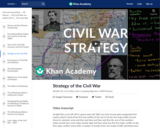
The strategy of the Civil War for the Confederacy (the South) was to outlast the political will of the United States (the North) to continue the fighting the war by demonstrating that the war would be long and costly. The Confederacy also hoped to entice European powers such as the United Kingdom to assist them against the United States in order to protect their cotton supply. The strategy for the United States was to surround the territory of the South in the Anaconda Plan, blockading the Atlantic Ocean and controlling the Mississippi, to keep goods from going into or out of the South and forcing them to surrender.

This section contains reproducible copies of primary documents from the holdings of the National Archives of the United States, teaching activities correlated to the National History Standards and National Standards for Civics and Government and cross-curricular connections.

How does Norman Rockwell tell a story in a single frame? This teacher guide provides background information, key images, and lesson plans that can be used either in conjunction with a museum visit or in the classroom.
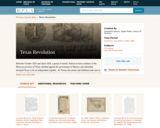
This collection uses primary sources to explore the Texas Revolution. Digital Public Library of America Primary Source Sets are designed to help students develop their critical thinking skills and draw diverse material from libraries, archives, and museums across the United States. Each set includes an overview, ten to fifteen primary sources, links to related resources, and a teaching guide. These sets were created and reviewed by the teachers on the DPLA's Education Advisory Committee.
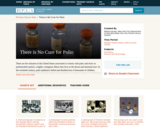
This collection uses primary sources to explore the polio epidemic and vaccine. Digital Public Library of America Primary Source Sets are designed to help students develop their critical thinking skills and draw diverse material from libraries, archives, and museums across the United States. Each set includes an overview, ten to fifteen primary sources, links to related resources, and a teaching guide. These sets were created and reviewed by the teachers on the DPLA's Education Advisory Committee.
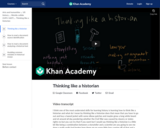
KA's historian Kim Kutz Elliott discusses some of the basic skills for thinking like a historian.

There are few ideas more sacred than the physical, emotional, and spiritual connections individuals have had with nature. The love of these beautiful landscapes has inspired countless generations to protect and preserve these lands and to make sure that the wild, untamed beauty will continue to awe future generations who have yet to come across their magnificence. On March 1, 1872, Yellowstone National Park was federally recognized as the countrys first protected area, 44 years before the National Park Service was founded in 1916. And with this first step, the conservation, culture, history, and preservation of parks and protected areas began. Not only do these parks and protected areas ensure the vitality of natural resources, but of historical and cultural resources as well. Constructing and defining the National Park Service as the revered organization that it is today was no easy task. While some individuals have used their talents to create and preserve the physical landscapephysically building the parks and developing policies and lawsothers have used their literary and artistic skills to showcase their beauty and history. No one person is the guardian or champion of these protected areaswith collaboration, vision, and connection to the land, we are part of the parks equally as the parks are part of ourselves. Created by Clemson University Libraries.
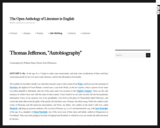
Autobiography of Thomas Jefferson. Transcription by William Maury Morris.

Students will consider the arguments made by members of the Continental Congress regarding whether or not to sign the Declaration of Independence. They will also have the opportunity to analyze each section of the Declaration to understand its meaning and consider the consequences of signing the document.

Welcome to the White House 360 Virtual Tour! This immersive experience will bring you inside the halls of the White House and provide access to all the public rooms on the Ground and State Floors. It will also allow you to examine the rooms and objects even closer than you would in person.
This feature was made possible in part by the National Endowment for the Humanities: Exploring the human endeavor.

This site puts students in the role of historians as they examine a buffalo hide painting and click on areas that reveal clues to the painting's story. The story helps students understand the role of the buffalo in the lives of the American Indians of the northern plains. Grades 4-12

The Trans-Atlantic Slave Trade Database has information on almost 36,000 slaving voyages that forcibly embarked over 10 million Africans for transport to the Americas between the sixteenth and nineteenth centuries. The actual number is estimated to have been as high as 12.5 million. The database and the separate estimates interface offer researchers, students and the general public a chance to rediscover the reality of one of the largest forced movements of peoples in world history.
This resource includes a database of Trans-Atlantic slaving voyages searchable by a wide range of variables in additional to essays, maps, and numerical estimates of the Trans-Atlantic Slave Trade, and K-12 lesson plans.
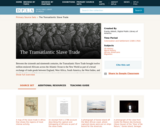
This collection uses primary sources to explore the Transatlantic Slave Trade. Digital Public Library of America Primary Source Sets are designed to help students develop their critical thinking skills and draw diverse material from libraries, archives, and museums across the United States. Each set includes an overview, ten to fifteen primary sources, links to related resources, and a teaching guide. These sets were created and reviewed by the teachers on the DPLA's Education Advisory Committee.

This footage shows the Constitution of the United States and the Declaration of Independence as they are loaded into an armored truck at the Library of Congress, taken to the National Archives Building in a procession down Pennsylvania and Constitution Avenues, and carried up the building's steps. President Harry S. Truman and Supreme Court Chief Justice Fred M. Vinson speak in a ceremony at the National Archives Rotunda on the historic importance of the documents.

This lesson presents documents pertaining to the treaty that brought an official end to the Mexican-American War. Materials for teachers and links to other resources accompany the documents.